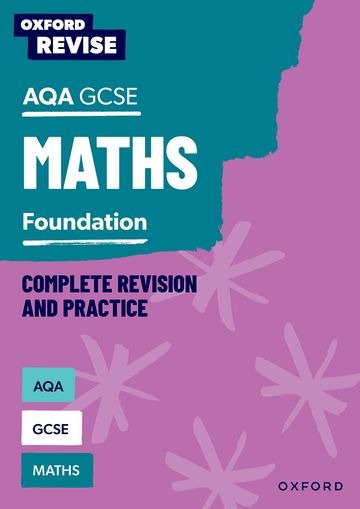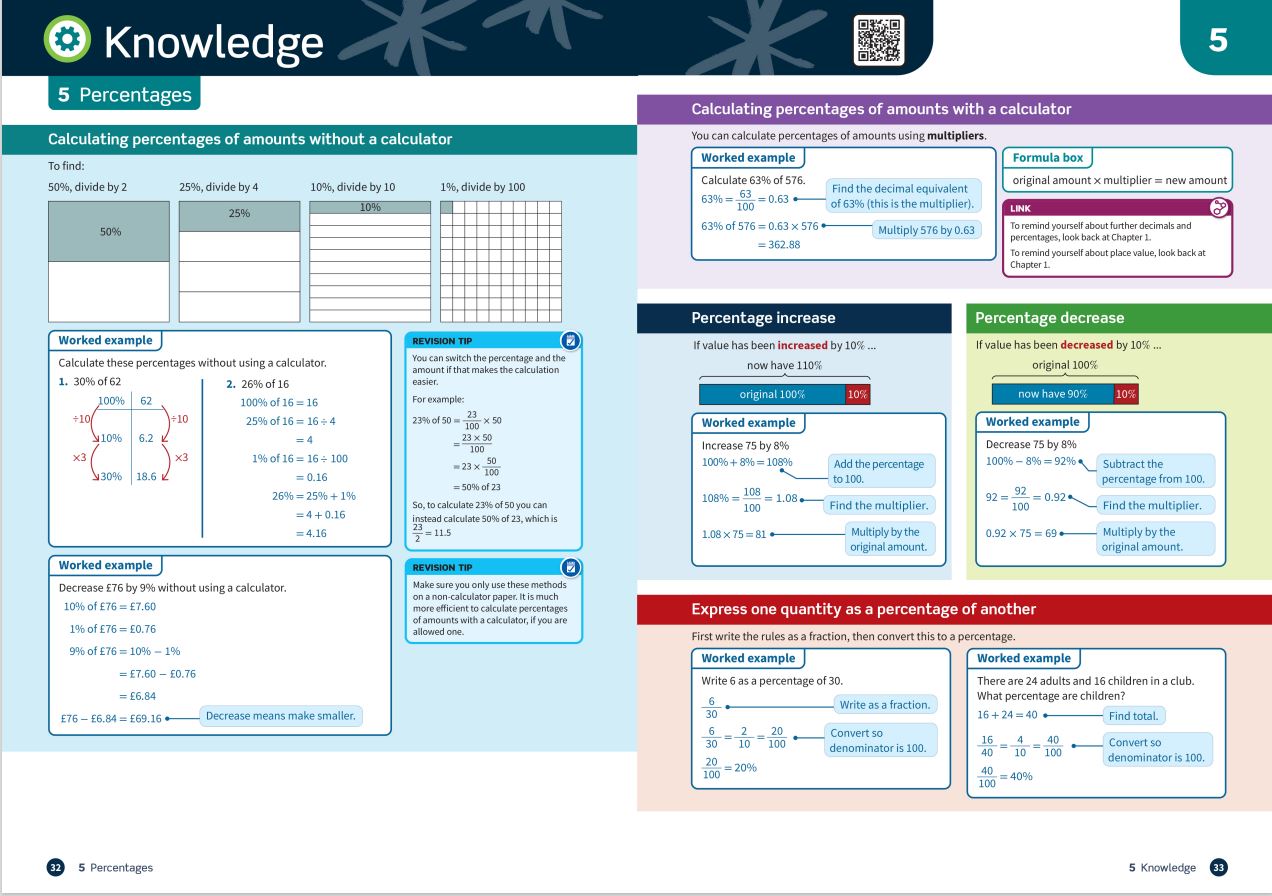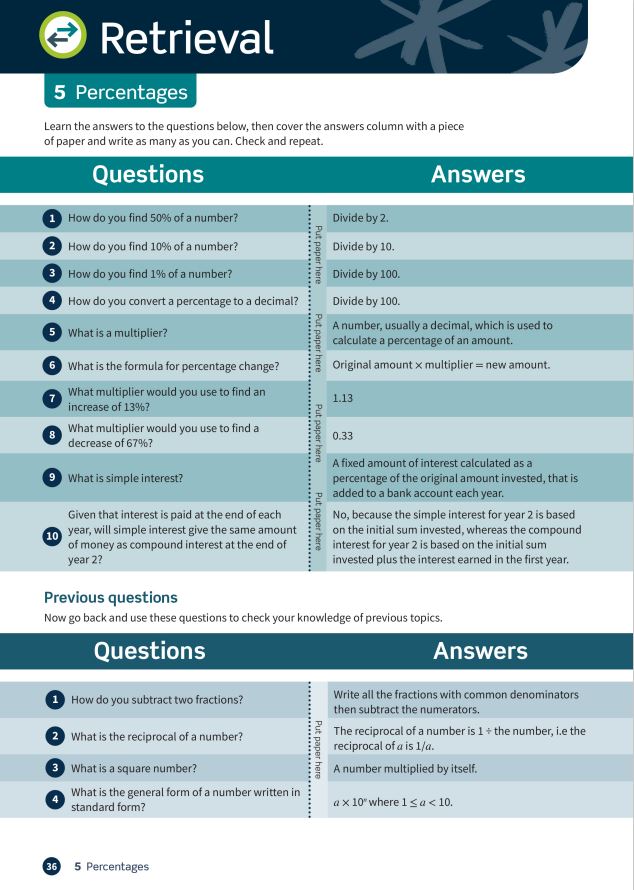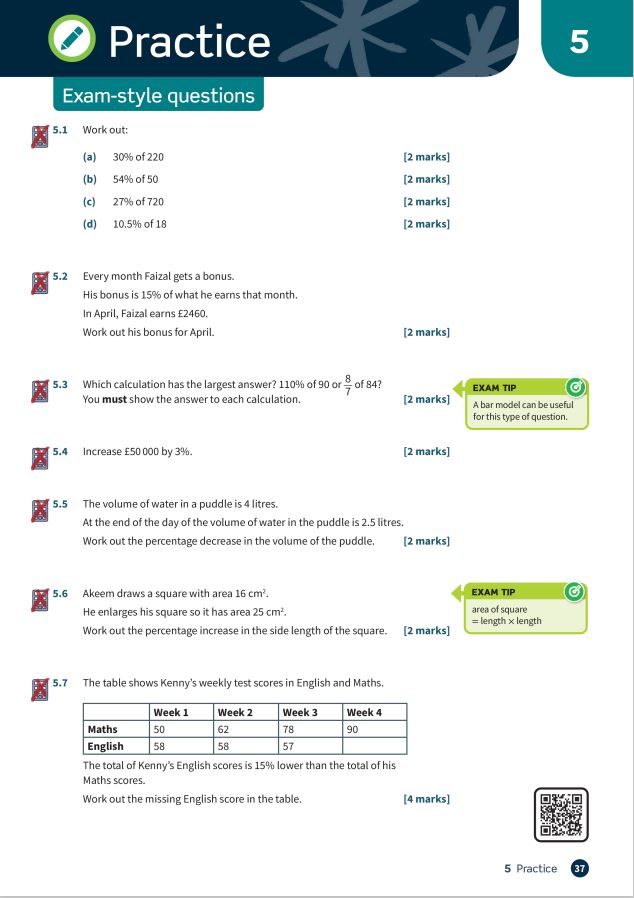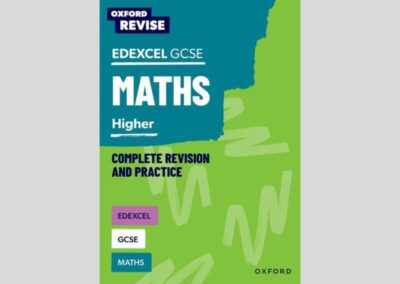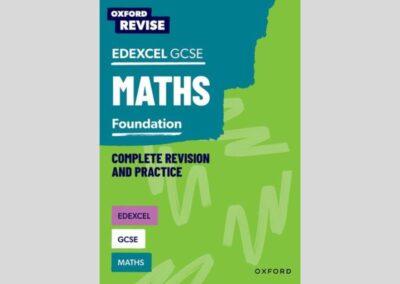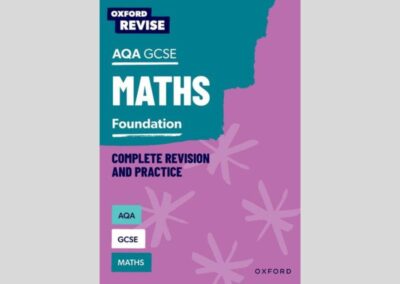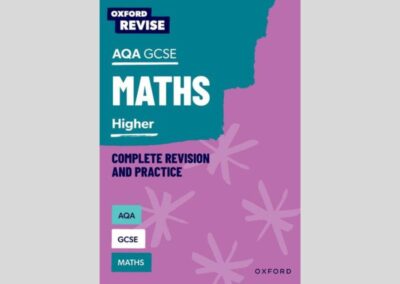AQA GCSE Mathematics, Foundation revision guide – About Oxford Revise
This revision guide has been specifically written to support you to get ready for the AQA GCSE Mathematics Foundation paper.
The content is tailored to the Maths Foundation paper so that it offers you exactly the right level of support.
Use the worked example questions and solutions to help you understand concepts. You will work through and answer practice exam questions to build your confidence ahead of the exam.
Revise effectively with Oxford Revise
This guide covers every topic in the AQA GCSE Mathematics Foundation course in depth, using clear, easy-to-understand language. For instance:
- Key terms boxes highlight the important words and language that you need to understand and help you to use them confidently.
- Revision tips give you quick ways to understand the core concepts and practice remembering them.
Exam Practice
Each chapter has lots of exam-style questions for you to practice. These are designed to build your confidence, consolidate your knowledge and stretch your understanding. As well as this, there are helpful tips throughout:
- Exam tips show you how to interpret questions, what you need to do in your answers, and give you advice on how to get as many marks as possible.
Want to boost revision success for your AQA GCSE Mathematics: Foundation Revision Guide
- Discover how to revise effectively for your Maths exam.
- Explore revision tips and techniques on the Oxford Revise YouTube Channel.
Contents list
GCSE AQA Foundation Maths
- Basic number
- Indices, Powers and Roots, Factors, Multiples, Primes
- Standard form
- Fractions, decimals, percentages
- Percentages
- Algebra and expressions
- Solving equations and inequalities
- Straight line graphs
- Real-life Graphs
- Solving quadratic equations by factorising
- Quadratic, cubic and reciprocal graphs
- Simultaneous equations
- Sequences
- Units and measures
- Ratio
- Proportion
- Angle facts
- Interior and exterior angles
- 3D shapes, plans and elevations
- Perimeter, area, volume
- Circles, cylinders, cones and spheres
- Similarity and congruence
- Transformations
- Pythagoras and trigonometry
- Constructions, loci and bearings
- Vectors
- Theoretical probability, Mutually exclusive events, Possibility Spaces and Probability experiments
- Expected results, Tree Diagrams, Set Notation and Probability from Tables and Diagrams
- Tables, charts and graphs
- Sampling and the averages
- Scatter graphs
Answers
The Oxford Revise approach
Oxford Revise uses a clear three-step method to get you ready for your exams.
1. Knowledge – Learn the facts through an easy-to-follow ‘Knowledge Organiser’ in each chapter.
2. Retrieval – Check you’ve retained the exam knowledge, through quick-fire recall questions and answers.
3. Practice – Put your knowledge into practice by completing plenty of exam-style questions.
In addition, there are lots of hints and tips from revision and subject experts on how to plan your revision and helpful advice on techniques to build exam confidence.
Our expert authors
Naomi Bartholomew-Millar
Paul Hunt
Victoria Trumper
Customer Reviews
Praise for Oxford Revise
Really good revision book that is well laid-out, has concise summaries of each topic and a good range of practice questions. It seems to cover the entire syllabus, which is always important! Useful.
Amazon review for a different book from the series
Absolute game changer!
Science Teacher, UK
Review for a different book from the series
